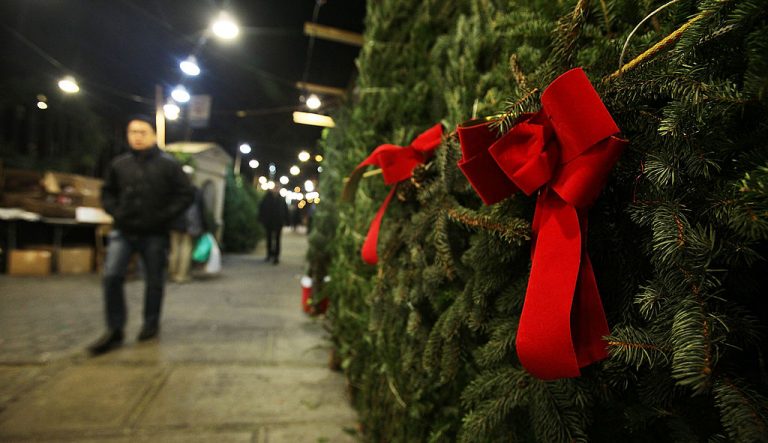With inflation sending prices of commodities higher, this Christmas season is becoming an expensive one. Christmas trees, a mainstay of the celebration, are substantially more pricey this year.
A recent report by the U.S. Department of Agriculture (USDA) stated that the prices of Christmas trees have almost doubled since 2015. Customers willing to buy a Tannenbaum tree will have to spend an additional 30 percent this year. Living trees are in short supply; even the supply of artificial trees is shrinking. Furniture seller IKEA has announced that it will not be selling Christmas trees in Canada this year.
According to James Bianco, founder, and president of Bianco Research, those who have already procured their Christmas trees are “lucky.” With the emergence of the new Omicron COVID-19 variant, not only is there a risk of U.S. inflation surging beyond six percent, it might also become harder to buy a Christmas tree in the coming weeks, he says.
“We’ve already got record demand for durable consumption, record demand for retail products… Yet we don’t have those products to meet them. They’re either stuck in the Los Angeles port or we’re just not going back to work to make them. That might mean more inflation,” Bianco told Bloomberg.
Extreme weather is one of the reasons that have led to a shortage of Christmas trees. Heatwaves and wildfires on the west coast have lowered inventory levels. Some farms in the region have reported losing 90 percent of their crop. Christmas trees take around five to ten years to mature to the point where they can be uprooted and sold. Losing a large number of trees would mean a massive supply shortage.
Success
You are now signed up for our newsletter
Success
Check your email to complete sign up
Meanwhile, the price of artificial Christmas trees has also risen. Eighty-five percent of American households used artificial trees for Christmas last year. Over 98 percent of artificial trees being imported right now come from communist China. The increase in shipping costs means that artificial trees are also pricier than before.
“There’s like a 30 percent increase on shipping… There’s a lot of people that aren’t wanting to pay the shipping increases so that’s why a lot of people are not bringing in trees this year,” David Gallagher, owner of Gallaghers Pumpkin and Christmas trees, told WFLA.
Actions of the federal government’s Christmas Tree Promotion Board might also be a factor in the shortage of trees. The board’s regulations and the assessment tax levied from tree growers could be preventing the industry from adjusting to the demand.
“Growers who make more than 500 [Christmas] trees annually are subject to detailed record keeping and reporting requirements. This gives growers an incentive to stay small, which keeps prices up and supplies scarce,” Ryan Young, a senior fellow at the libertarian Competitive Enterprise Institute, told the Washington Times.
A report published by consulting firm Deloitte revealed that 11.5 percent of Americans plan on not spending any money on gift cards and presents for the holiday season. Thirty-nine percent who plan on spending more money are only doing so because products are now more expensive.
The survey saw a significant change in the spending habits between high-income and low-income groups. Households earning over $100,000 per year will spend 15 percent more on Christmas; those making below $50,000 will cut down their spending by 22 percent compared to last year.
According to Stephen Rogers, executive director of Deloitte’s consumer industry division, this “tale of two holidays” is a good reflection of how the pandemic has affected different income groups.
“Those of us who have investments in 401ks did quite well. You can see from 2019 to 2021, the lower income group is spending almost half of what they used to spend. And the higher income group is almost double what they used to spend two years ago,” he said.















